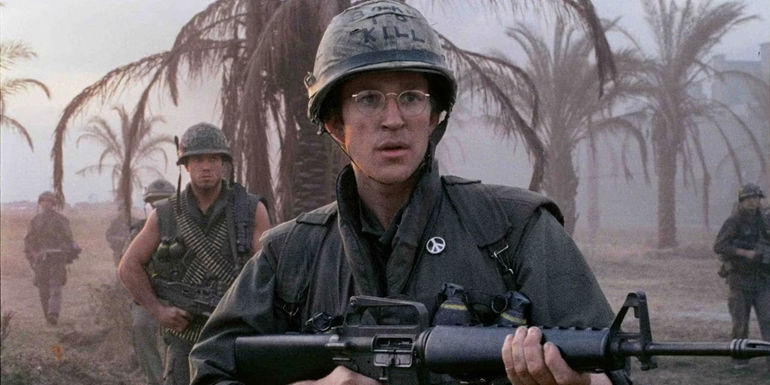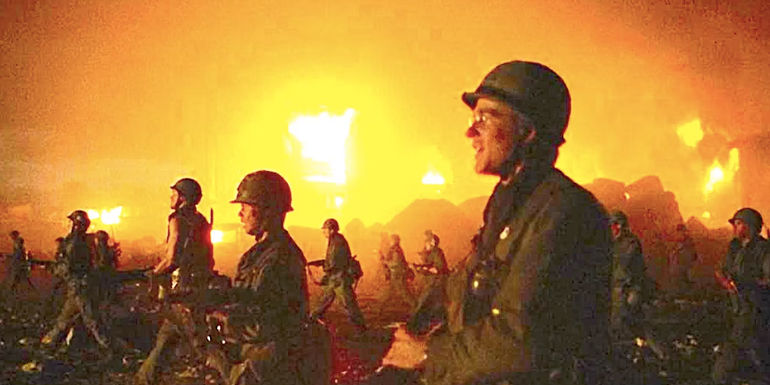
The Realistic and Unrealistic Aspects of Full Metal Jacket

A detailed analysis of the accuracy and realism of the 1987 film, Full Metal Jacket, based on the experiences of a veteran of the United States Marine Corps.
The Art of Recreating History
Full Metal Jacket, released in 1987, is a gripping portrayal of the Vietnam War, following the journey of a platoon of U.S. Marines from boot camp to the battlefield. The film, directed by Stanley Kubrick, delves into the gritty reality of war and the psychological impact it has on soldiers. With a talented cast including Matthew Modine, R. Lee Ermey, Vincent D'Onofrio, and Adam Baldwin, the movie captures the essence of the Vietnam War experience.
Private Joker (Matthew Modine) on the battlefield in Full Metal Jacket
The visual representation of the battle for Huế in Full Metal Jacket has sparked debates about its historical accuracy. Military history professor Bill Allison, in a video from Insider, scrutinized the film's portrayal of the Tết Offensive in January 1968. His analysis delved into the accuracy of the scenes and the extent to which they aligned with the actual events of the war.
Soldiers taking cover in Full Metal Jacket
The Battle for Huế: Realism vs. Fiction
The scene in Full Metal Jacket depicting the battle for Huế has been a focal point of criticism regarding historical accuracy. Allison's assessment highlights the discrepancies between the film's portrayal and the actual city of Huế. The use of London as a stand-in for Huế and the open setting deviate from the dense, urban landscape of the real city. While the overcast weather in the film aligns with historical records, the visual representation of the battle falls short in capturing the true essence of Huế.
Private Pyle (Vincent D'Onofrio) looking deranged in Full Metal Jacket
Allison also scrutinizes the combat tactics depicted in the film, pointing out instances of unrealistic portrayals. The firing patterns, troop movements, and the maneuverability of the soldiers in the film are subject to scrutiny, highlighting the discrepancies between the film's depiction and the actual events of the battle.
Matthew Avery Modine as Joker and the troops singing in Full Metal Jacket's ending.
The Realism of Full Metal Jacket: A Veteran's Perspective
The realism of Full Metal Jacket is rooted in the experiences of Gustav Hasford, a veteran of the United States Marine Corps, who co-wrote the screenplay based on his own experiences during the Vietnam War. Hasford's firsthand knowledge and experiences provide a level of authenticity to the film, particularly in the portrayal of boot camp training under the abusive drill instructor, Gunnery Sergeant Hartman.
R Lee Ermey yells at a cadet in Full Metal Jacket
The film's accuracy in capturing the nuances of military training and the psychological impact on soldiers during the first half has been widely acclaimed. However, the second half, which depicts the Tet Offensive, falls short of complete adherence to historical accuracy, as scrutinized by Allison. While the film may not capture every detail of the actual events, it remains a powerful and compelling portrayal of the Vietnam War experience.












